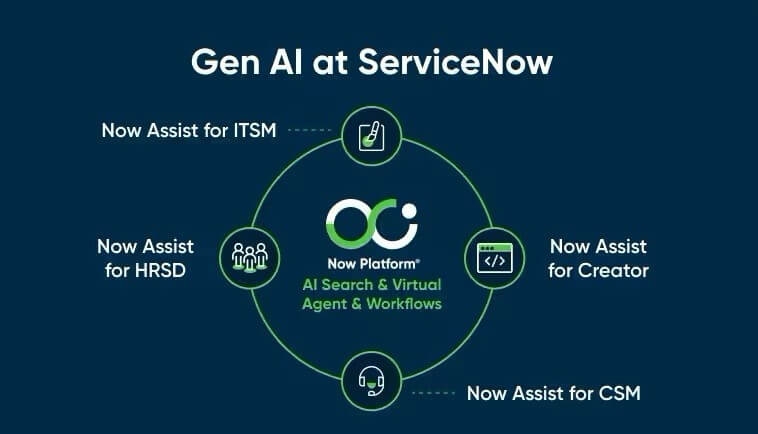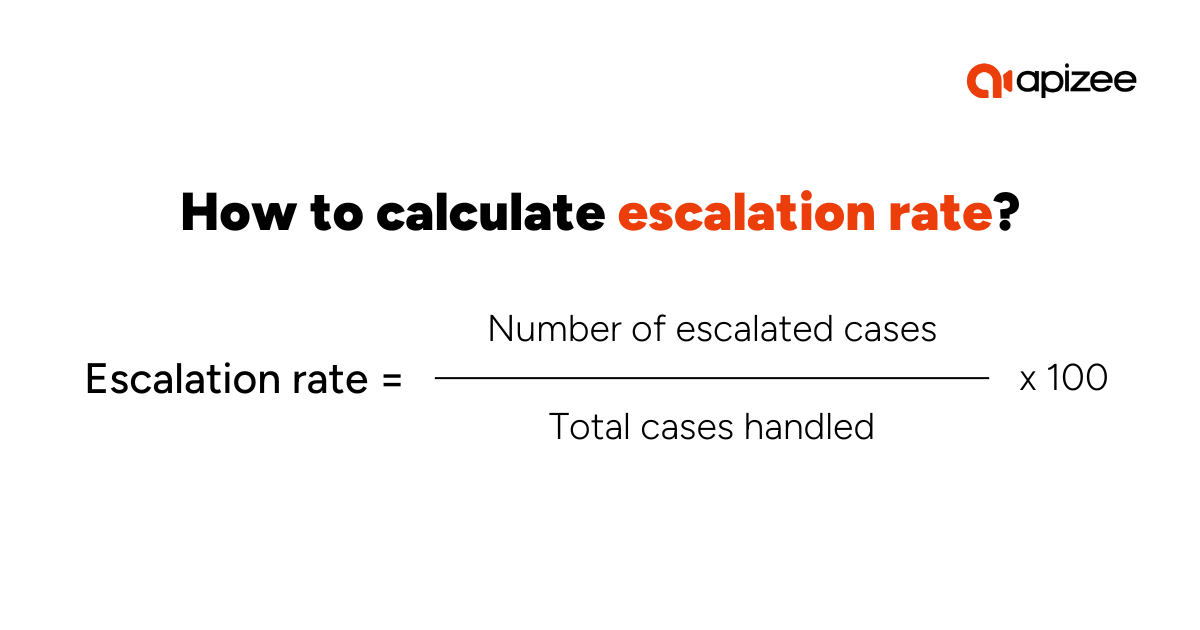How to Master Escalation Management and Improve Customer Satisfaction



Customers expect the freedom to choose how they engage with your business—whether through social media, chat, email, phone, or video calls—while still receiving fast and efficient service. According to HubSpot Research, 90% of customers consider an 'immediate' response essential or very important when they have a customer service question. Even more striking, 60% define 'immediate' as 10 minutes or less. These high expectations put immense pressure on businesses to handle escalations swiftly and effectively.
This article will explore the fundamentals of escalation management, including the different types of escalations, strategies for improvement, the role of AI in streamlining the process, and how different industries handle escalations. Additionally, we’ll discuss key performance metrics like escalation rate to help businesses assess and refine their approach.
By mastering escalation management, businesses can not only meet but exceed customer expectations—turning challenges into opportunities for stronger relationships and brand loyalty.
Escalation management is the structured process of identifying, prioritizing, and resolving issues that cannot be handled at the initial point of contact. It ensures that complex or high-priority concerns are efficiently transferred to the right teams or individuals for resolution.
Effective escalation management minimizes delays, improves customer satisfaction, and enhances internal workflows. Without a clear process in place, unresolved issues can lead to customer frustration, lost business, and reputational damage.
Escalations typically occur in customer service, IT support, healthcare, and various other industries where timely issue resolution is critical. Organizations implement escalation management frameworks to define when and how cases should be escalated, ensuring accountability and a smooth resolution process.
Not all escalations are the same. They vary based on urgency, complexity, and the resources required for resolution. Below are the most common types of escalations:
This occurs when an issue requires expertise beyond the current support level. For example, a frontline customer support agent may escalate a technical issue to an IT specialist or a billing dispute to the finance team.
When an issue is not resolved within a predefined time frame or reaches a critical level, it is escalated to higher management. This type of escalation is common in customer service and corporate settings, where unresolved complaints may need the attention of supervisors or executives.
Certain issues demand immediate attention based on their urgency or severity. For instance, a cybersecurity breach or a system outage would be escalated as a top-priority case, ensuring it is addressed before less critical concerns.
In some cases, businesses use automation tools to trigger escalations based on predefined criteria. For example, if a customer support ticket remains unresolved for a specific time, it may automatically be escalated to the next support tier.
Customers sometimes demand to speak with a higher authority when they feel their issue is not being addressed properly. This type of escalation is common in customer service, particularly when dealing with complaints or disputes.
By understanding these different escalation types, businesses can design better customer workflows and response strategies to ensure seamless issue resolution. Up next, we’ll explore how organizations can improve their escalation management process to meet rising customer expectations.
Businesses must fine-tune their escalation management processes to ensure quick, efficient, and empathetic resolutions. According to Salesforce, 75% of customers expect a seamless experience across all channels, whether they engage through social media, in person, or over the phone.
Moreover, research by Ipsos reveals that 9 out of 10 Americans want brands to show more empathy, with 86% linking empathy to greater brand loyalty. This means that businesses must not only resolve escalations efficiently, but also do so with a customer-first mindset.
To help organizations build a strong escalation management system, here are the top best practices to follow:
1. Define Clear Escalation Protocols
Establish well-documented escalation procedures that outline when and how an issue should be escalated. Define escalation triggers, responsible parties, and expected resolution timelines to avoid confusion and unnecessary delays.
2. Empower Agents with the Right Tools
Manual tracking of escalations can be inefficient and lead to bottlenecks. Investing in a robust customer support solution streamlines workflows, ensures seamless case handoffs, and enhances visibility into ongoing escalations.
3. Implement Multi-Channel Support
Customers interact with businesses across multiple platforms, including phone, email, social media, live chat, and remote video support. A unified omnichannel support system ensures a consistent escalation process regardless of the channel.
4. Define Clear Service Level Agreements (SLAs)
Establish well-defined SLAs (Service Level Agreements) that outline response and resolution timeframes for different escalation levels. This ensures accountability and helps teams prioritize urgent cases efficiently.
5. Create an Escalation Matrix
An escalation matrix clearly defines who is responsible for handling different levels of escalations and when they should be engaged. This eliminates confusion and ensures issues are addressed at the right level of expertise.
6. Train Agents in Empathy and Conflict Resolution
Escalations often involve frustrated customers. Since empathy is a key driver of customer loyalty, agents should be trained in active listening, de-escalation techniques, and problem-solving skills to resolve issues at the lowest level possible before further escalation.
7. Automate Escalations for Faster Resolutions
Leverage AI-driven automation tools to prioritize urgent cases, trigger escalations automatically, and route them to the right teams based on predefined rules. This reduces response time and prevents cases from getting lost.
8. Conduct Root Cause Analysis of Issues
Repeated escalations indicate deeper issues that need to be addressed. Performing root cause analysis (RCA) helps businesses identify patterns, fix recurring problems, and reduce the overall volume of escalations over time.
9. Monitor Escalation Metrics and KPIs
Track key escalation performance metrics such as escalation rate, average resolution time, and customer satisfaction scores to pinpoint inefficiencies and areas for improvement.
10. Foster a Culture of Continuous Improvement
Encourage teams to regularly review escalation cases, learn from past issues, and refine processes. Continuous training and process improvements help businesses stay agile and enhance customer satisfaction.

Artificial Intelligence (AI) is transforming customer service by automating routine tasks, allowing businesses to provide faster, more efficient support. As AI continues to handle straightforward customer inquiries, the more complex issues are left to human agents and their managers. This shift makes escalation management more critical than ever, as businesses must ensure that high-priority cases are quickly and effectively transferred to the right personnel.
By leveraging AI-driven tools, companies can create a smarter, more proactive escalation process that improves customer satisfaction and reduces agent workload.
Here’s how AI is reshaping escalation management:
AI-powered systems equipped with Natural Language Processing (NLP) can analyze customer sentiment, intent, and context in real time. This allows businesses to:
For example, if an AI system detects increasing frustration in a chat conversation, it can escalate the case automatically to a senior agent before the situation worsens.
AI can prioritize and route escalations efficiently by:
With smart queue management, AI ensures that critical escalations aren’t lost in a backlog, improving overall efficiency.
Trainable AI chatbots can handle common customer queries, reducing the number of cases that require human intervention. This helps businesses by:
By reducing manual workload, AI chatbots ensure that human agents can dedicate more time and attention to escalated cases.
A well-designed AI-driven channel workflow ensures that escalations are handled consistently across all customer support channels (live chat, email, phone, social media, etc.). AI can:
AI doesn’t just manage escalations—it learns from them. By analyzing past cases, AI can:
Want to see how Apizee can enhance your escalation process and improve customer satisfaction?
Contact usIncorporating AI agents into escalation management processes enhances efficiency, accuracy, and customer satisfaction. Platforms like Now Assist by ServiceNow and Agentforce by Salesforce offer advanced AI solutions tailored to streamline and optimize these processes.
ServiceNow's Now Assist integrates generative AI to boost productivity across various business functions. In escalation management, Now Assist:
These capabilities ensure that critical issues are promptly identified and managed, reducing downtime and enhancing customer satisfaction.
Now Assist also supports seamless escalation to Apizee, enabling video chat or screen sharing when AI alone cannot resolve a complex issue. In one click, customers can connect with a live support agent, allowing them to visually demonstrate their problem for a faster resolution.
Salesforce's Agentforce empowers organizations to build and customize autonomous AI agents that operate across various business domains. In the context of escalation management, Agentforce offers:
By leveraging Agentforce, businesses can enhance their escalation management processes, leading to improved efficiency and customer satisfaction. Like Now Assist, Agentforce seamlessly escalates unresolved cases to Apizee, enabling real-time video calls and screen sharing. This allows support agents to see the issue firsthand, dramatically improving troubleshooting speed and customer satisfaction.
In the next section, we’ll explore how businesses can measure escalation performance, including key metrics like escalation rate to continuously improve their support processes.
Effectively managing escalations isn’t just about resolving issues—it’s also about continuously improving the process. To do this, businesses need to track and measure key escalation performance metrics. By analyzing these metrics, organizations can identify inefficiencies, improve response times, and enhance customer satisfaction.
One of the most fundamental metrics to track is the escalation rate.
The escalation rate is a key performance indicator (KPI) that helps businesses understand how frequently customer issues require higher-level intervention. A high escalation rate may indicate gaps in first-level support, while a lower rate suggests that most inquiries are resolved without the need for escalation.
Formula for Escalation Rate:

For example, if a support team handled 1,000 cases in a month, and 150 of those were escalated, the escalation rate would be:
(150/1000)×100 = 15%
This means 15% of all cases required escalation, providing insight into potential areas for improvement.
While the escalation rate is crucial, other related metrics can provide deeper insights into performance, including:
By regularly tracking these KPIs, businesses can refine their escalation processes, reduce resolution times, and ensure a better overall customer experience.
BONUS TIP : 14 Must-Know Customer Experience Metrics To Boost Retention and Revenue
Different industries face distinct challenges and have varying needs when it comes to escalation management. The nature of customer interactions, the complexity of issues, and the urgency of resolutions differ significantly across sectors, affecting how escalations are handled.
Below is a comparison of escalation management across some key industries:
| Industry | Average Escalation Rate |
|---|---|
| Software & Technology | 5-10% |
| E-commerce | 3-7% |
| Financial Services | 8-15% |
| Telecommunications | 10-20% |
Key Insights Across Industries:
Escalation management is a critical aspect of any customer service strategy, as it directly impacts customer satisfaction, loyalty, and retention. Understanding how to manage escalations effectively can set businesses apart, especially in industries where timely issue resolution is crucial. While aiming for a lower escalation rate is important, businesses should not fall into the trap of thinking that a low rate is always ideal. A too-low escalation rate might indicate that front-line agents are handling issues outside their expertise, leading to customer dissatisfaction when problems remain unresolved.
Moreover, it’s essential to recognize that escalation rates are not isolated to customer service. These rates have a ripple effect across various departments, including product development, marketing, and even sales. For example, frequent escalations related to product issues can point to underlying problems with product design or quality, which would require attention from the product development team. Similarly, addressing common customer issues early on through proactive strategies can reduce the burden on customer service agents, ultimately benefiting other areas of the business.
Finally, it’s important to understand that escalation rates are not fixed. They fluctuate based on a variety of factors, such as product updates, changes in the customer base, and improvements in the support process itself. As businesses grow, AI tools and automation will play a larger role in managing escalations efficiently, but it’s crucial to balance this with human intervention when necessary. By continuously monitoring and adapting to changing conditions, businesses can ensure that their escalation management strategy remains effective and aligned with customer expectations.
Effective escalation management isn’t just about resolving issues quickly; it’s about resolving them in the right way, with the right resources. Whether you're leveraging AI to enhance ticket routing or ensuring that human agents are equipped to handle complex queries, keeping escalation management at the forefront of your customer service strategy will help you meet the rising expectations of today’s consumers.
Don’t let customer issues go unresolved—empower your support team with the tools they need to deliver fast, effective, and empathetic solutions.
Discover how Apizee can be included in your escalation management process and drive better customer experiences today!
Get startedExplore key findings from the Genesys State of Customer Experience report. Learn how AI, omnichannel strategies, and video chat are transforming CX and enhancing customer satisf...
The State of Customer Experience report by Genesys : Key Insights and Trends
27 Mar 2025
Despite AI and automation, customers still prefer to speak to a human for support. Discover why human interaction remains essential for great customer service.
Why Customers Still Want to Speak to a Human in Customer Service
17 Mar 2025
Discover the top customer experience influencers in Europe, shaping the future of CX and customer service.
Top 100 Customer Experience Influencers to follow
10 Mar 2025
Interested in our solutions?